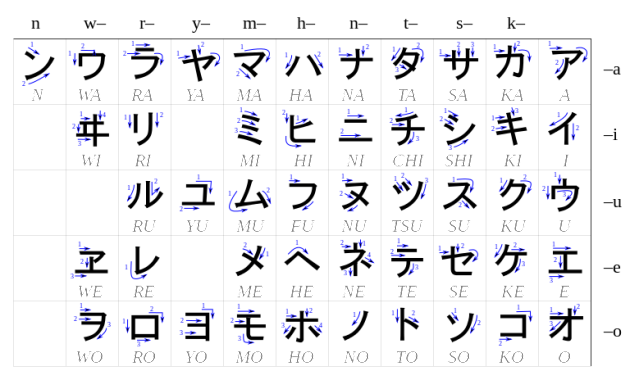The Three Japanese Writing Systems and How to Master Each One
Contrary to popular belief, the Japanese language itself is not technically difficult. The rules of grammar, conjugation, and sentence structures are generally straightforward and simple. However, many Japanese language learners consider the writing system the hardest part to learn. Japanese does not just have one alphabet of characters, it has three! There are three writing systems that are completely separate and are used together to form words and sentences. This can make reading and writing the two most difficult skills to learn and remember. Here is an explanation of each of the systems and a few tricks to help you learn them quickly and efficiently:
Hiragana
Hiragana is a simple alphabet consisting of 46 characters. Each character relates to a specific sound. Hiragana characters are used in a variety of ways. Some examples are verb and adjective endings, grammar particles, miscellaneous words, and phonetic readings for kanji symbols. Hiragana is typically the first alphabet you will learn in Japanese. All Japanese words can technically be written in Hiragana letters and sounded out to form words.
Tip: Memorize the characters in a grid format. Start with the vowel sounds and work your way through the consonant-vowel combinations in the same order. For example: a, i, u, e, o / ka, ki, ku, ke, ko. This way, you can form a sound repetition in your mind as you write each character.
 Photo of Hiragana via Prezeslany / Wikipedia
Photo of Hiragana via Prezeslany / Wikipedia
Katakana
Katakana is another simple alphabet, but is not used as often as Hiragana. It has 48 characters, which are originally derived from Chinese characters and simplified. It only has specific uses such as translations of foreign words, plants and animal names, onomatopoeia, and emphasis (used like italics).
Tip: Since the sounds are the same as Hiragana, you can write the same grid pattern with the Katakana letter. Notice how the lines are straighter and simpler? Compare back and forth the differences between the same letter in Katakana and Hiragana. This will help to not confuse the two systems while you are writing.
 Photo of Katakana via PMX / Wikipedia
Photo of Katakana via PMX / Wikipedia
Kanji
Considered the most complicated of the three systems, Kanji historically comes from Chinese origin. Kanji are made of radicals, individual characters, combined into a singular Kanji character. Although they have been simplified from their Chinese counterparts, they still have many strokes in a single character. The only way to learn Kanji is to memorize each one. Kanji are used for nouns, the roots of verbs and adjectives, and most Japanese names and places. You cannot sound them out like in the simpler alphabets because Kanji have multiple pronunciations depending on their pairings with other Kanji or Hiragana. Kanji are critically necessary because many words phonetically sound the same and Kanji shows the difference in the meaning. There are thousands of Kanji which can make it hard to ever feel fluent in written Japanese. The good news is that they say it only takes about 2,000 Kanji to be able to read the newspaper!
Tip: Start with simple Kanji radicals that require few strokes. Learn stroke order and muscle memory with the small ones to get used to memorizing symbols. Once you have memorized the simple radicals, you will be able to notice layers of radicals in more complex Kanji characters.
 Photo of Kanji via Chameleon / Wikipedia
Photo of Kanji via Chameleon / Wikipedia
Once you begin to master the three writing systems, there’s no stopping your language progression! The first step is to take a Japanese level test online before choosing the best Japanese course for you with native Japanese tutors. With these simple tips, you can soon be reading the Japanese newspaper with your morning coffee!
